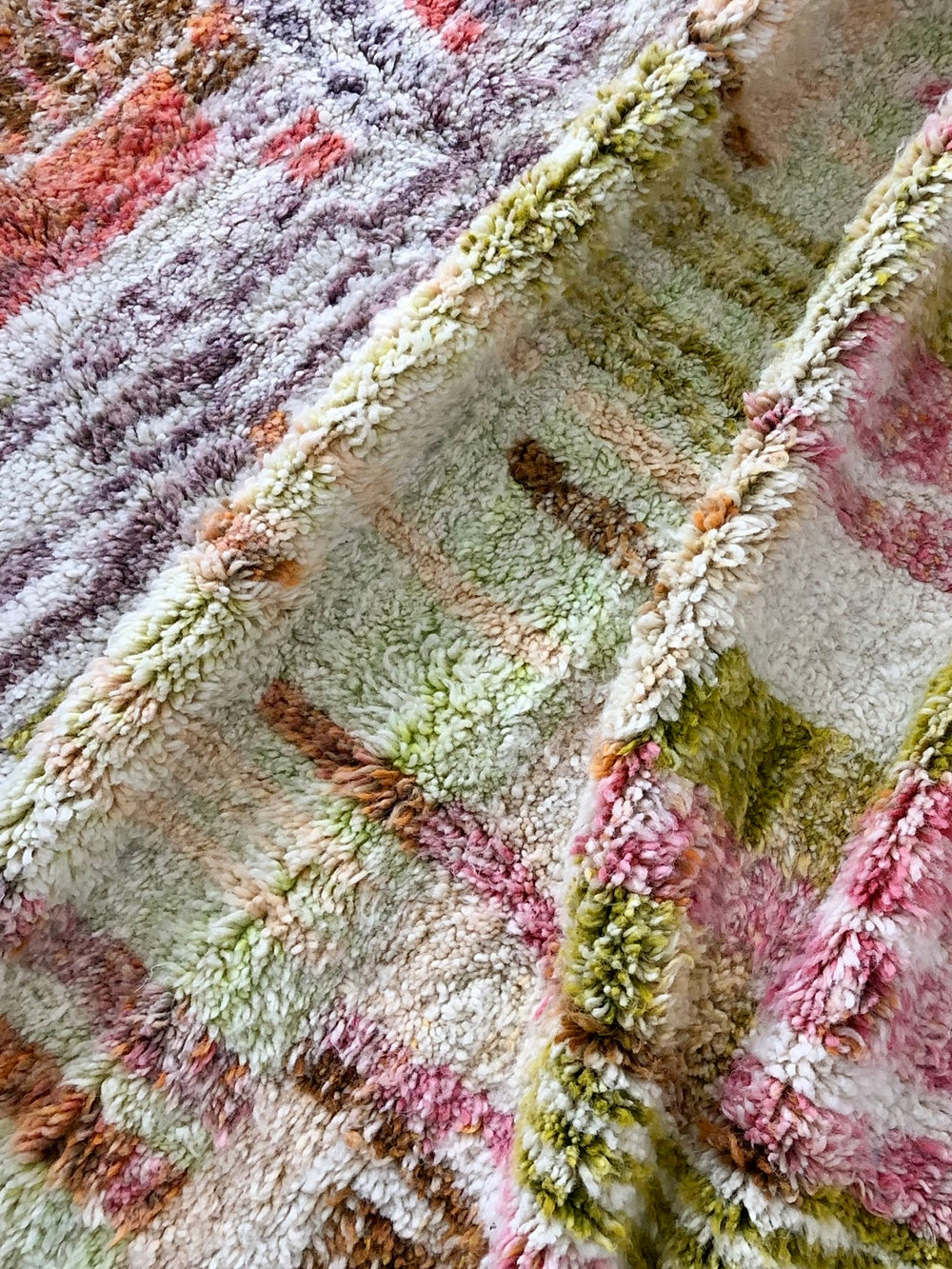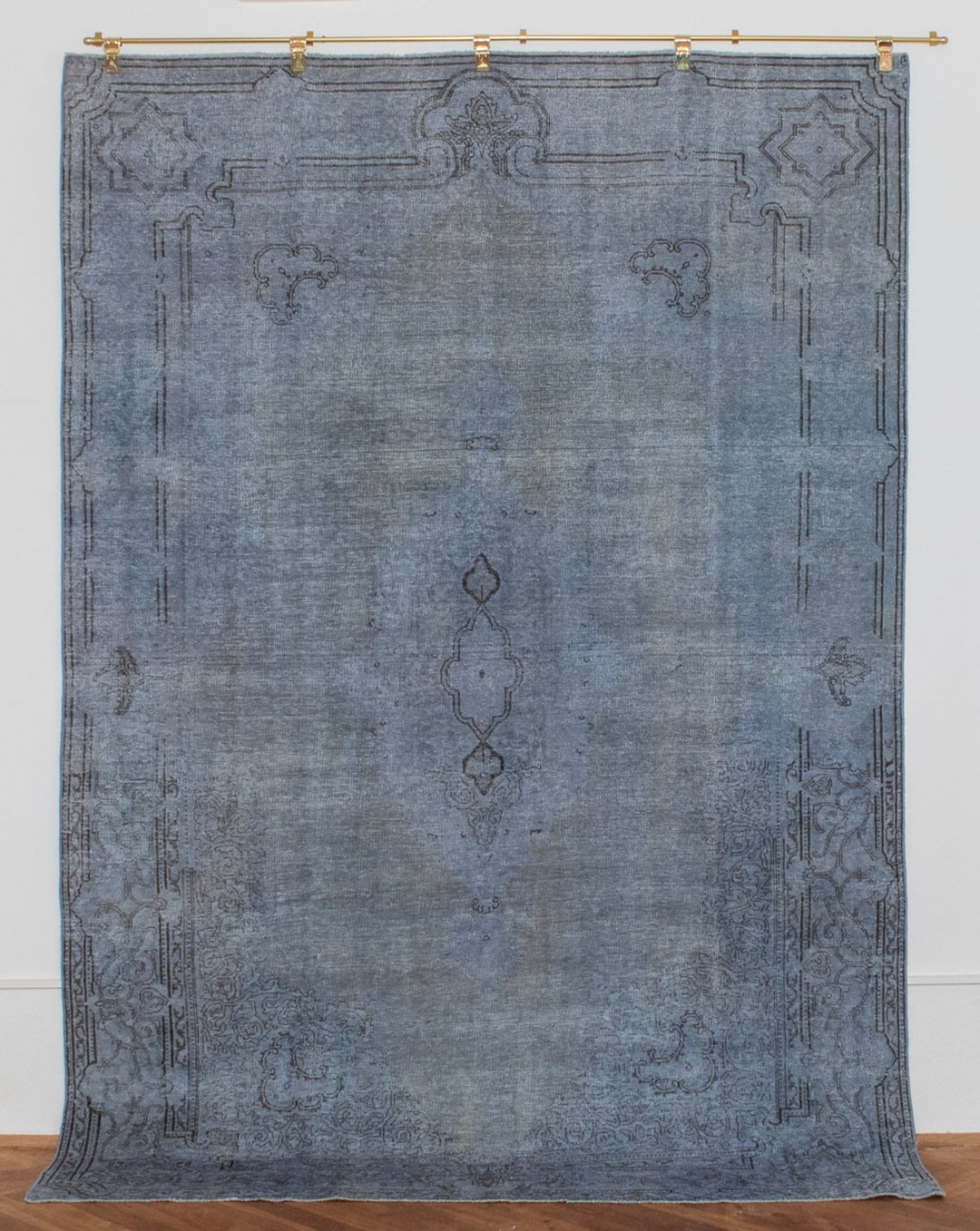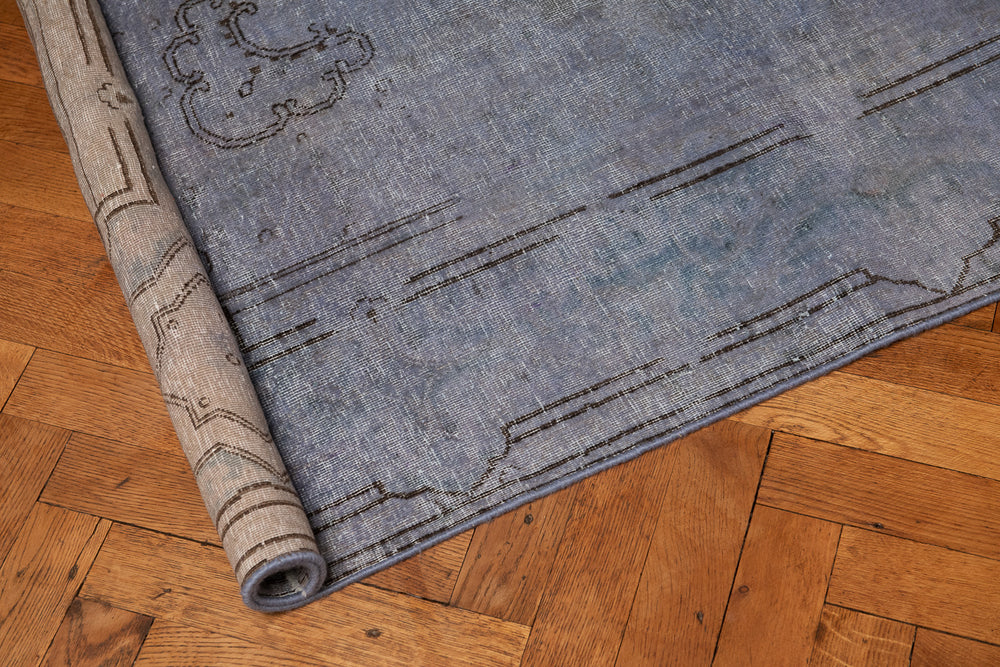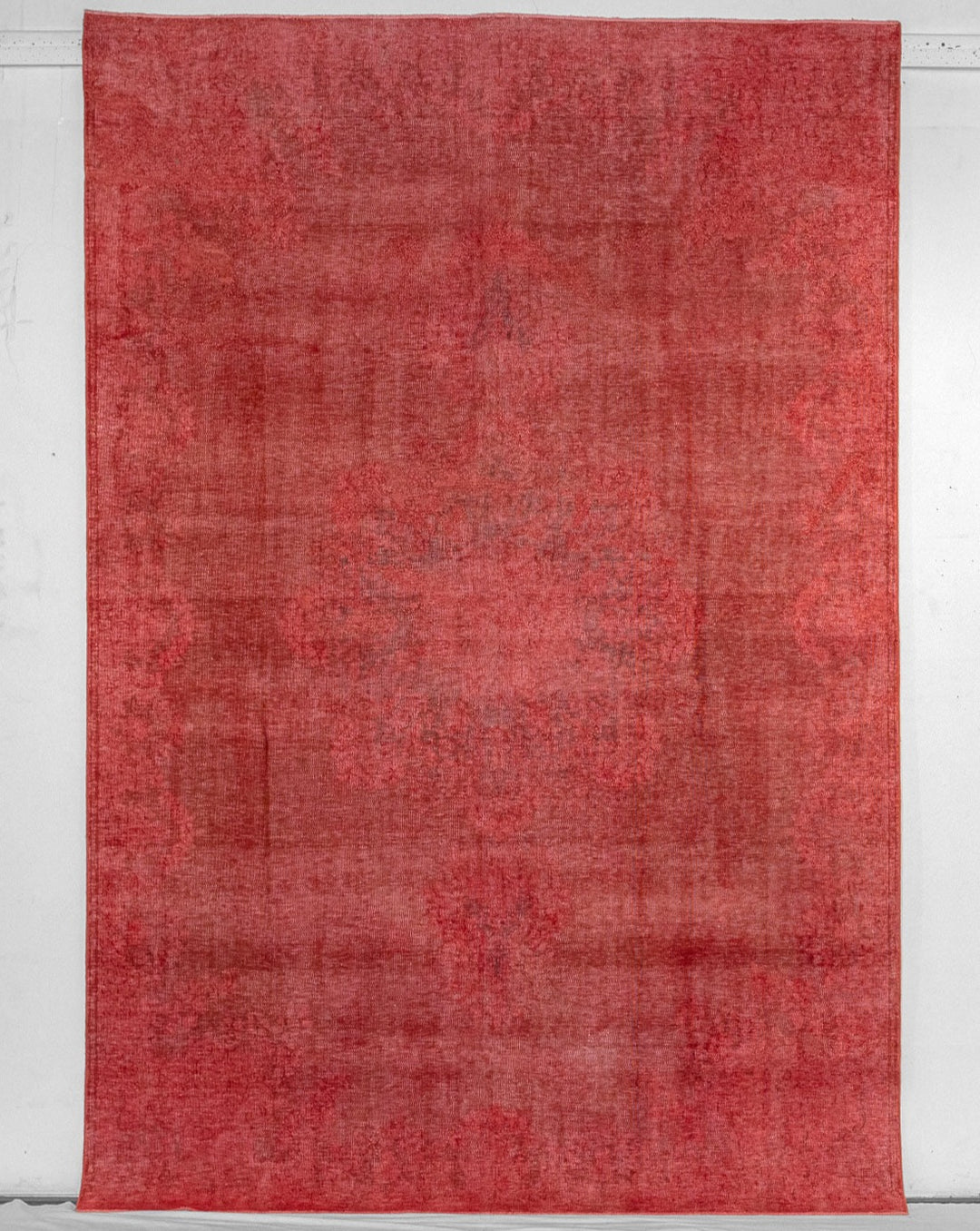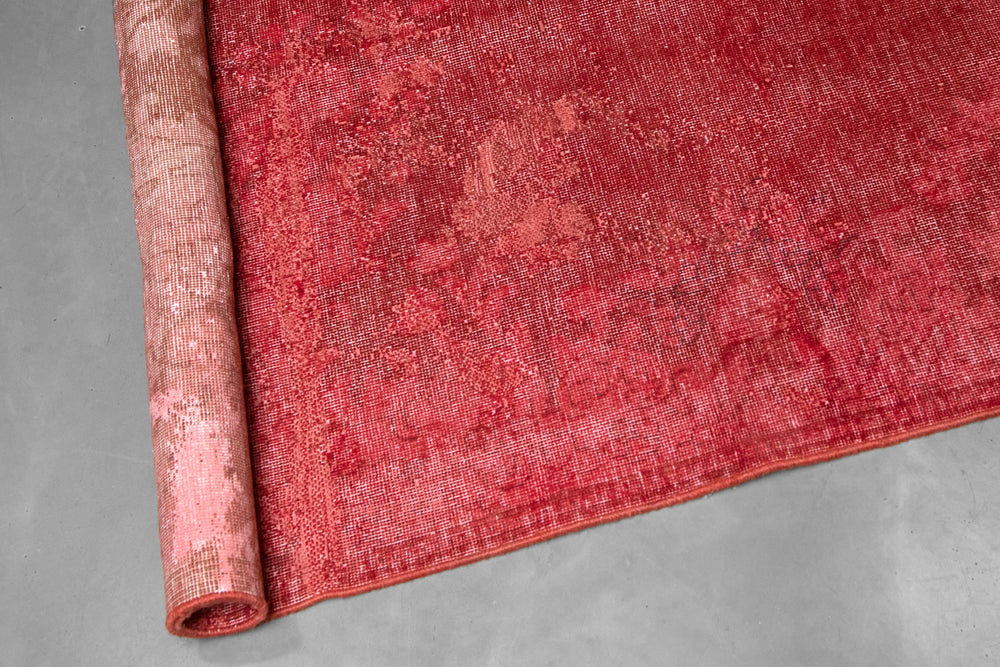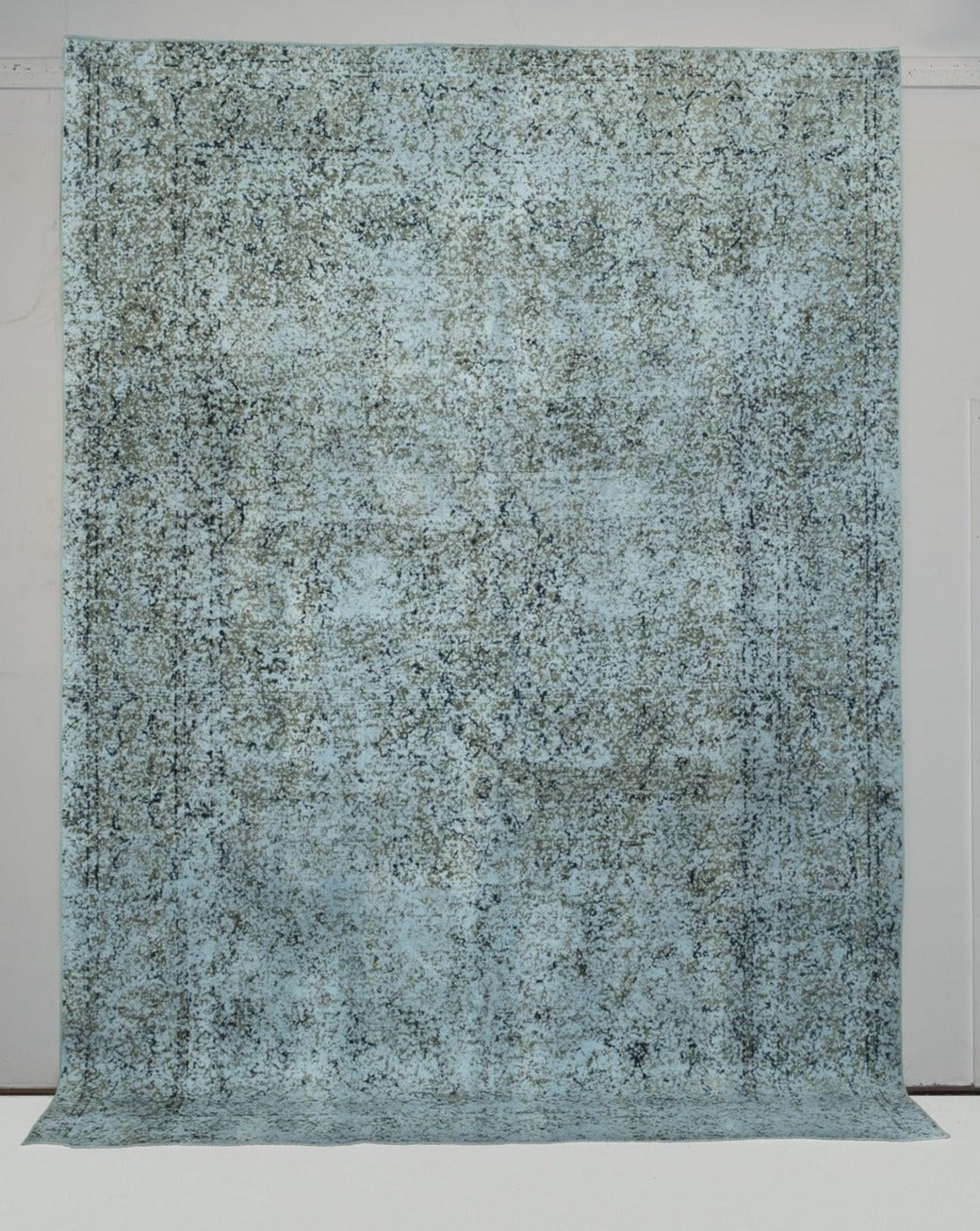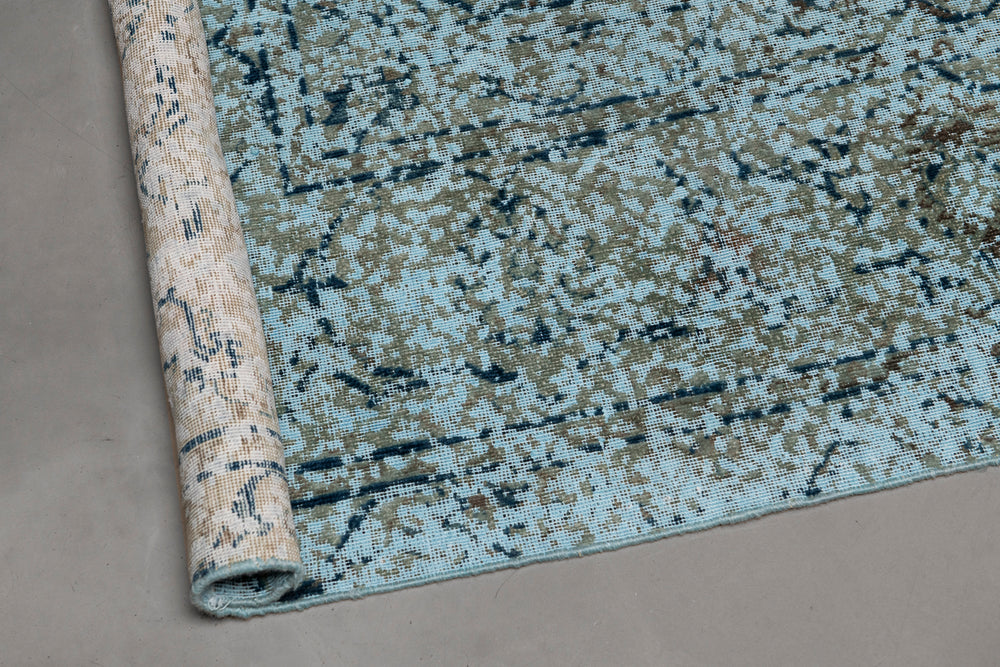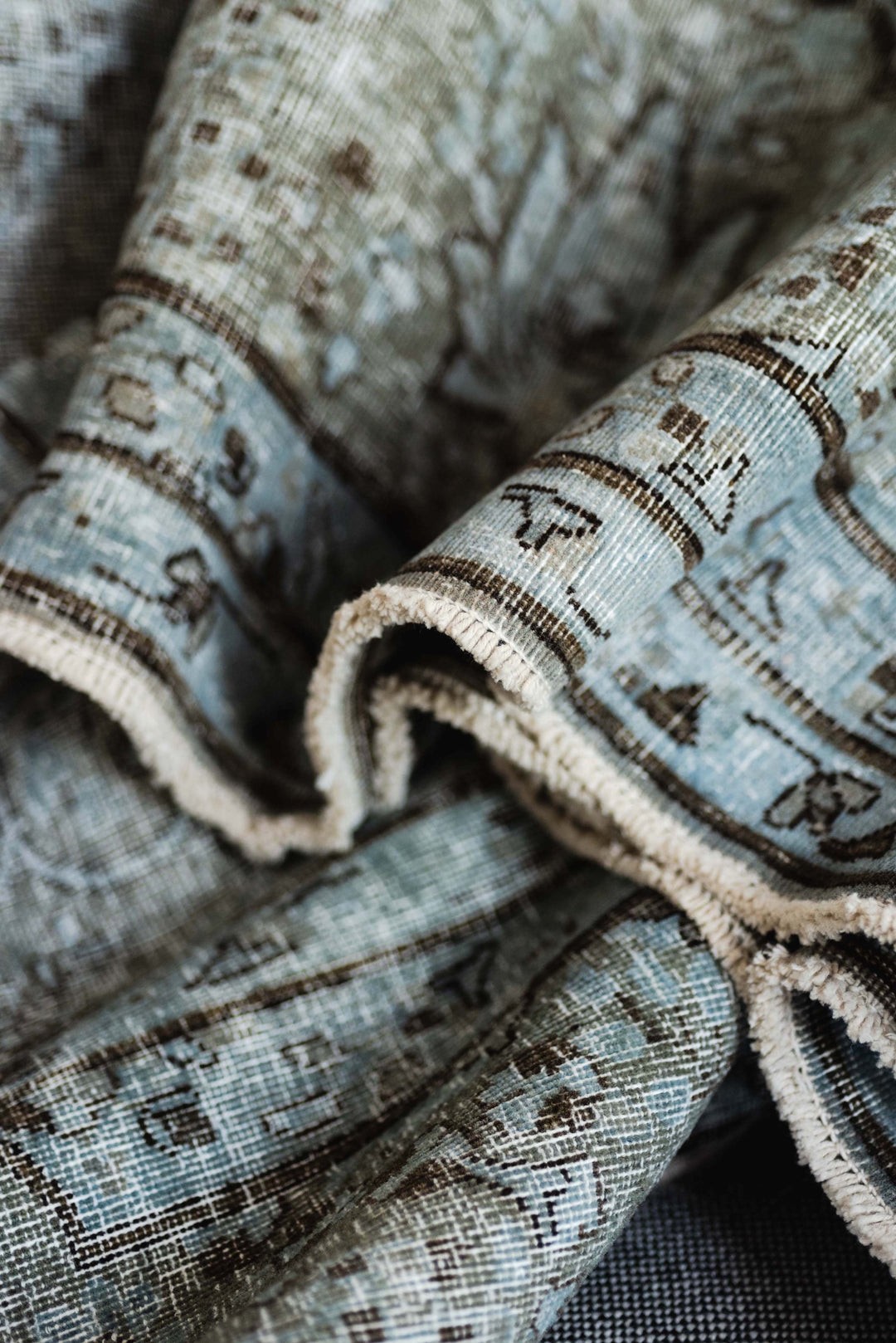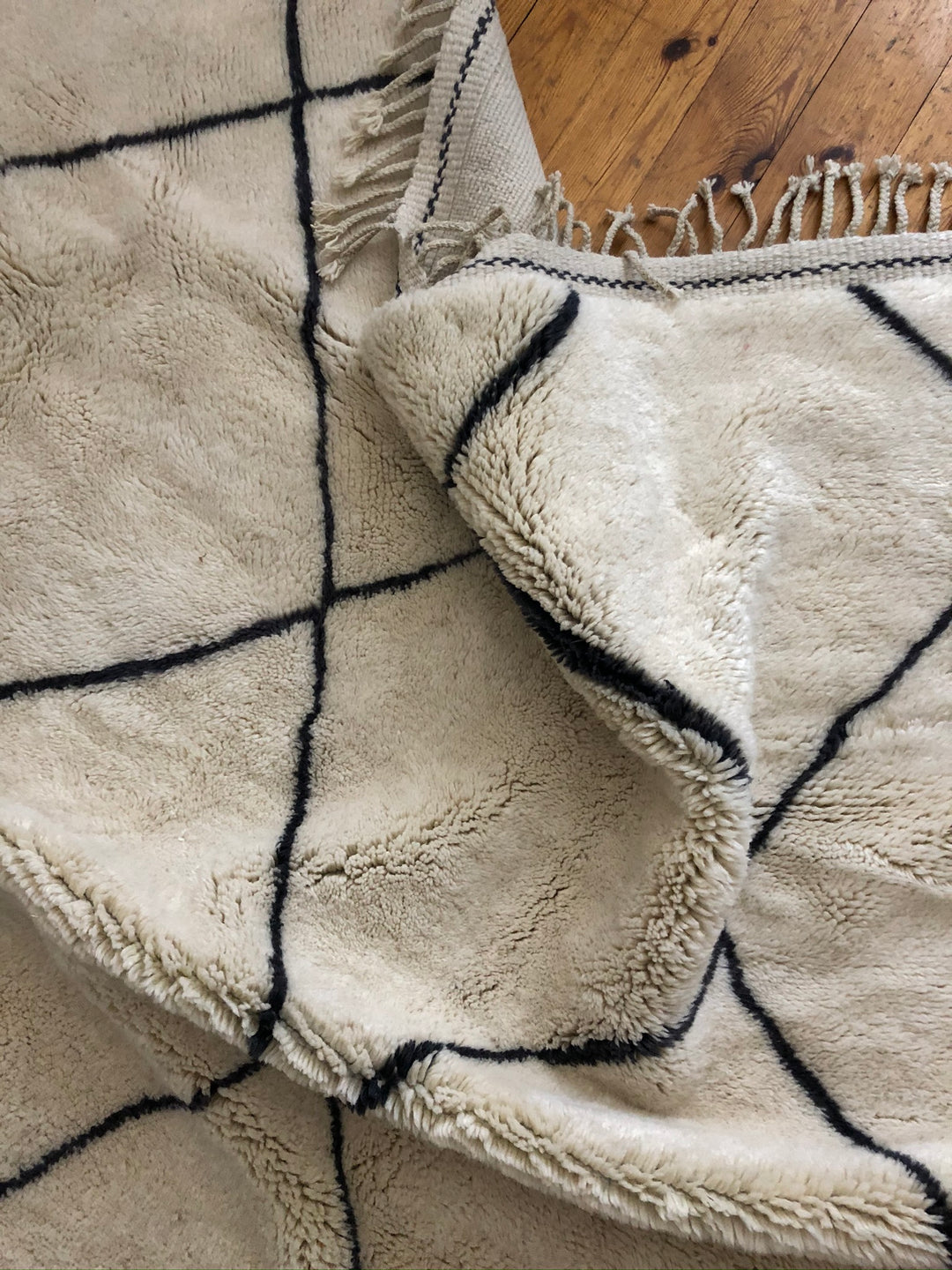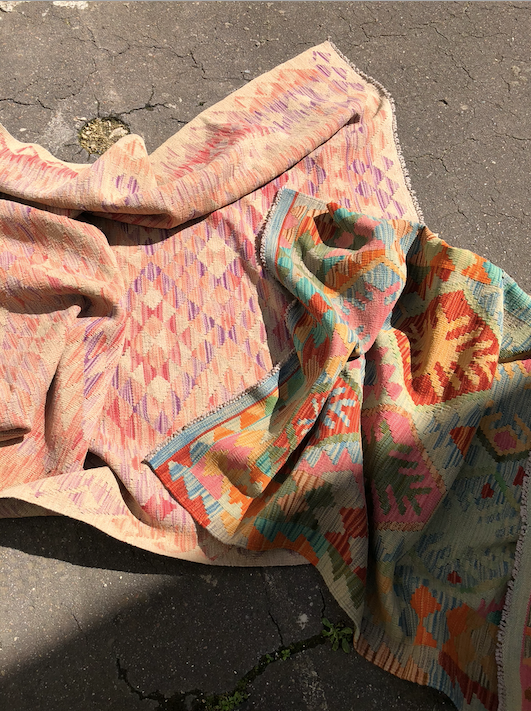Vintage Rugs
By vintage carpets we mean old oriental carpets, which are given a modern look by a special process. The combination of past and present is typical for articles by THE KNOTS from Berlin. Vintage looks will continue to define home trends in the future. A vintage carpet is a contemporary design object where traditional craftsmanship meets interior design culture in 2022. Characteristic for vintage carpets by THE KNOTS are their homogeneous coloring in shades such as gray, blue, purple, yellow, or beige. Black is also modern for carpets. In contrast, accentuating colors such as pink, green or turquoise can create special moments in your living room. Above all, it is the interplay of colors and shapes that makes vintage carpets so special. Today's adaptations of old oriental carpets by our carpet label from Berlin pay special attention to maintaining the originality of these pieces. Our items represent a selection of carpets of different patterns, all of which go back to original designs. Our vintage carpets are like patchwork patterns in which past and present are woven together. A vintage carpet from THE KNOTS is a carpet of the highest quality with an absolutely timeless character that adorns all floor coverings and adds a personal touch to any room - whether it is a living room, hallway, dining room, bathroom or children's room.
There is only a certain number of Vintage Rugs available in this world and sometime in the not too distant future they will disappear.




